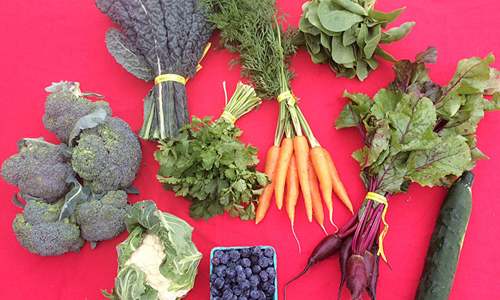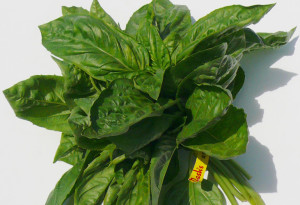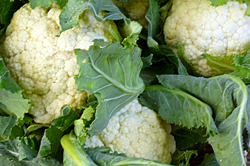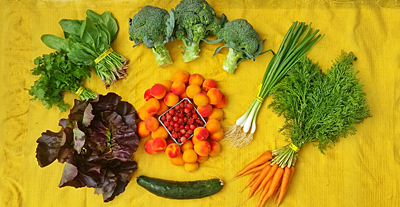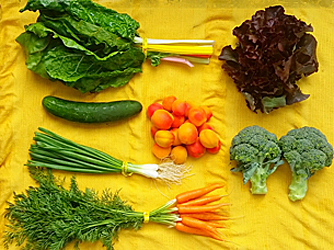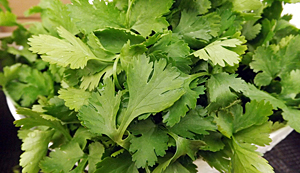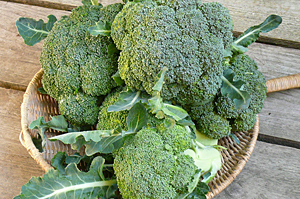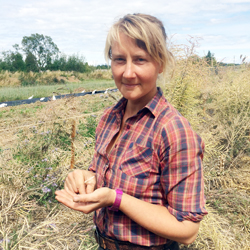Standard Box

Cherry Tomatoes 1/2 pt
Red Cabbage 1 hd
Baby Leeks 1 bu
French Breakfast
Radishes 1 bu
Basil 1/4 lb
Red Russian Kale 1 bu
Cauliflower 1 hd or
Broccoli 2 lb
Italian Parsley 1 bu
Nectarines* 3.5 lbs
Spinach 1 bu
Small Box
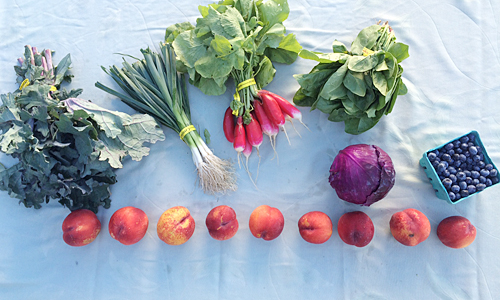
Red Cabbage 1 hd
Baby Leeks 1 bu
French Breakfast Radishes 1 bu
Red Russian Kale 1 bu
Blueberries, Hayton Farm 1 pt
Spinach 1 bu
Nectarines* 3 lb
*Sunnyslope Ranch, Wapato, E WA
Baby Leeks
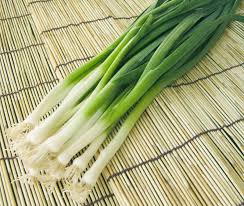
Baby leeks do not form bulbs like baby onions. They are more like scallions. They are tender with a mild sweet flavor. Baby leeks are crisp when raw, but soften easily when caramelized. You can eat the entire plant, including the green parts, because they are young and tender, too.
Baby leeks are mild enough to eat raw, well textured enough for withstanding long cooking periods. They are perfect for classic recipes such as pot pies, leek tarts and hearty soups. Baby leeks are a great salad or pizza ingredient, can be carmelized when sautéed with olive oil or butter and added to potato dishes and pastas.
Grilling leeks gives them a rich smokiness. They should be blanched prior to grilling, so they retain their coloring and don’t over burn. Baby leeks pair well with cream sauces such as béchamel, cheeses, especially goat, cheddar and aged sheep’s cheese, bread crumbs, poultry, grilled and smoked white fish, apples, fennel, garlic, mustard, cooked eggs, tomatoes and vinaigrettes.
Braised Baby Leeks
Wash and trim the ends and roots of your bunch of baby leeks. Heat a pat of butter in a large frying pan, and add the leeks. Roll them around to coat them in the butter.
Add ½ cup chicken stock and bring to a boil, then turn down to a simmer and add a handful of thyme springs. Cook for 20 minutes or until tender. Serve with a sprinkling of thyme leaves.
Radishes!

Radishes belong to the cruciferous vegetable family, which means that they are related to broccoli, cauliflower, and cabbage and have a similar and very health-promoting phytonutrient content. Phytonutrients are plant chemicals that protect human health.
Radishes are rich in:
- Vitamin A – protective for eye health
- Vitamin C – immune system-supporting
- Folic acid – neuronal development
- Fiber – supports healthy cholesterol profile
- Potassium – essential for blood pressure balance
Fresh Radish and Greens Salad
1 Tbsp. lime juice
2 Tbsp. orange juice
1 Tbsp. white balsamic vinegar (or red wine vinegar)
3 Tbsp. walnut or olive oil
1 tsp. Dijon mustard
¼ tsp. pepper
Dash of salt
4 cups mixed greens (you can substitute spinach)
1 cup thinly sliced red radishes (about 2 bunches)
1 large apple, quartered, cut into julienne strips
½ cup cucumber cut into julienne strips
½ cup shredded carrots
¼ cup coarsely chopped walnuts, toasted
¼ cup feta cheese
Place dressing ingredients in a large bowl, whisk together, and set aside. Combine greens, sliced radishes, apple strips, shredded carrots, and cucumber strips in a large salad bowl. Toss salad with ¾ of dressing (add all dressing if necessary) and place on four plates. Garnish each plate with walnuts and feta cheese.
Recipe adapted from www.webmd.com


